GMKtec NucBox K8 review
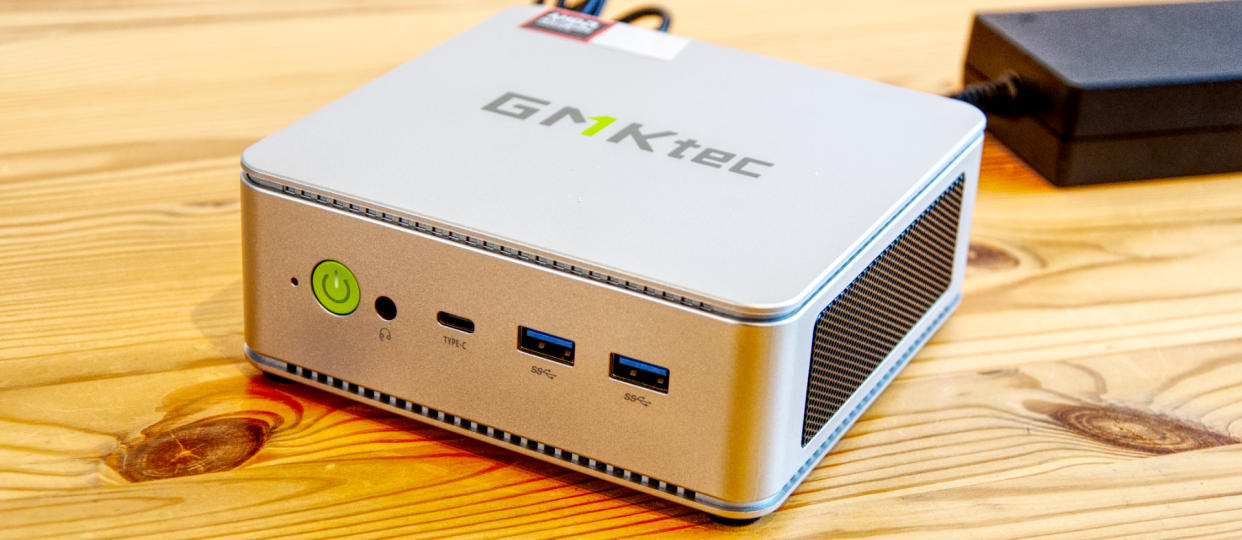
30-second review
Mini PCs from GMKtec are not unlike London buses, where you don't see a new one for a while, and then a convoy appears.
Recently, GMKtec released the NucBox K8, K6, K5, K4, K2 and M5, and we'll be looking at the first of those, a power-packed machine with the latest AMD Zen 4 Hawk Point processor technology inside.
The chip in question is the AMD Ryzen 7 8845HS, a Hawk Point design with eight cores, sixteen threads and a maximum clock of 5.1 GHz.
In addition to being a powerful platform, this chip offers a better Radeon 780M GPU and can address up to 32GB of DDR5.
The K8's feature selection makes it a jack-of-all-trades, with dual LAN, dual M.2 NVMe slots, and triple monitor outputs. The only output it doesn't offer natively is Thunderbolt, though it does have USB 4.0.
Those reading these specifications and thinking this will be expensive might be pleasantly surprised to see what this machine can be bought for.
The cheapest option is a 'barebones' model with No RAM, storage, or Windows, which is currently on a special offer for $499.99. An SKU with 1TB of storage, 32GB of RAM, and Windows is $649.99. The third option has 2TB storage for only another $50 more.
Considering its performance and features, that's a competitive price from a well-respected small-system maker.
Our only reservation about the NucBox K8 is the silver colour, but you can VESA mount it to the rear of a monitor and not easily see it.
GMKtec NucBox K8: Price and availability
How much does it cost? From $500
When is it out? Available now
Where can you get it? Directly from GMKtec
In the short review section, we discussed the price of the K8, which starts at $500 for a system without RAM, storage, or Windows. For an additional $150, you can add 32GB of RAM, 1TB of storage, and Windows 11 Pro.
In the UK, those prices translate into £400.22 for the barebones and £520.29 for the 1TB model.
That's on a flash sale that will end shortly. The official prices for the barebones are $689.99 and $849.99 for the 1TB option.
It seems unlikely that the prices will go to these levels after the sale, but based on demand, it might happen.
As GMKtec is one of the first brands to offer a Zen 4 Hawkpoint system, it could name its price here, but the offers that have followed the launch make the K8 highly affordable for those who want a tiny computer with plenty of power.
Value: 4 / 5
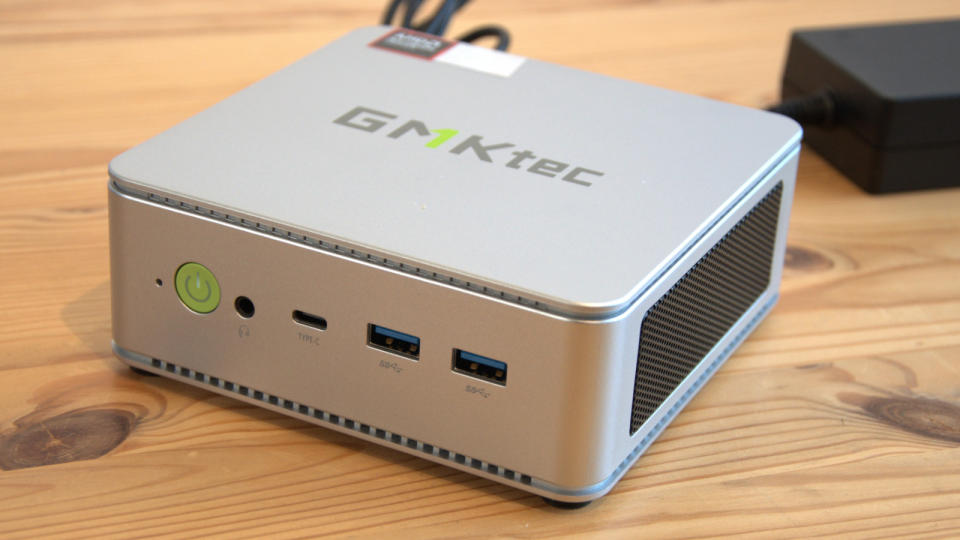
GMKtec NucBox K8: Specs
GMKtec NucBox K8: Design
All plastic
Awkward internal access
Lacks Thunderbolt
It's curious to realise that this NUC has almost precisely the same features as the Acemagic F2A, with the proviso that it's an AMD system and not an Intel one.
Like the F2A, this is an all-plastic design which isn't as resilient as some of the aluminium enclosures we've seen. The silver paint GMKtec used won't convince anyone it's metal when they touch it.
It also suffers from the issue that the F2A was criticised for, specifically awkward internal access. While the top of the K8 detaches easily enough, this only provides access to the screws needed to remove another layer and reach the important internal areas.
Another complication is that the inner cover has a 50mm fan attached to it, which needs to be detached from its mainboard connector before it can be completely removed.
Once you overcome those hurdles, you can get access to the two PCIe 4.0 M.2 and the SODIMM DDR5 memory slots.
Two 16GB branded Crucial DDR5 5600 modules in our review machine provided 32 GB. These can be replaced with 32 GB modules to get the maximum memory capacity of 64 GB.
According to AMD, this processor can address up to 256GB of DDR5, so the 64 GB limitation might be a BIOS-applied restriction. However, 48 GB and 64 GB modules are becoming available, and we are keen to find out if you can go larger than the quoted 64 GB.
It beats the F2A because this machine has a single USB 4.0 port and a potential 40Gbps bandwidth on that channel. While native Thunderbolt would have been preferable, this single port can add many additional ports using a docking station. It can also add a third display connection to the HDMI and DisplayPort choices.
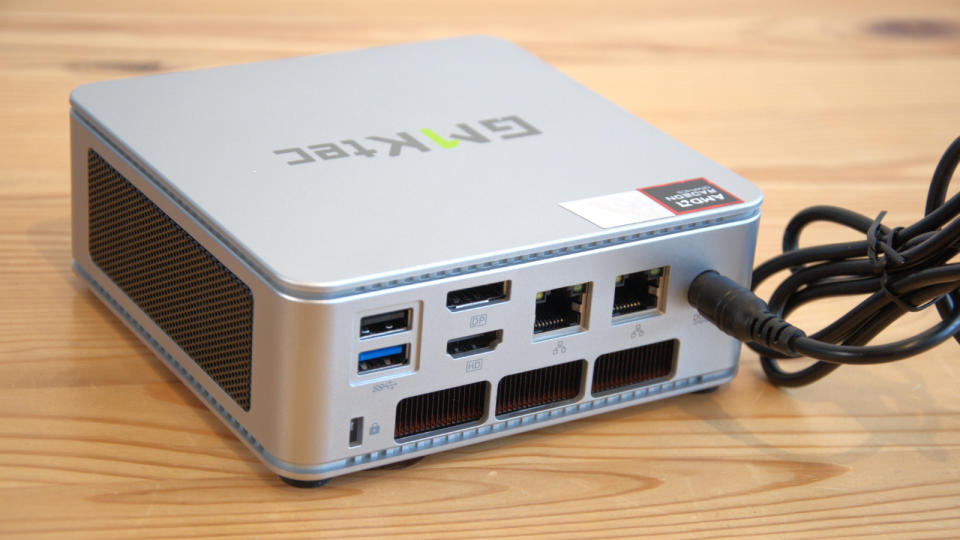
In terms of the port layout, it's good to see that GMKtec designers have realised that USB 3.2 Gen 2 ports and USB 4.0 are better placed at the front to connect external SSDs.
However, the AMD Ryzen 7 8845HS has two USB 4.0 ports, so why wasn't one put on the back? Unusually for a small system, the 20 lanes of PCIe available to this platform are probably underutilised in the K8.
Overall, except for internal access and the choice of silver plastic, the K8 is a workable design that doesn't include any obvious howlers.
Design: 4 / 5
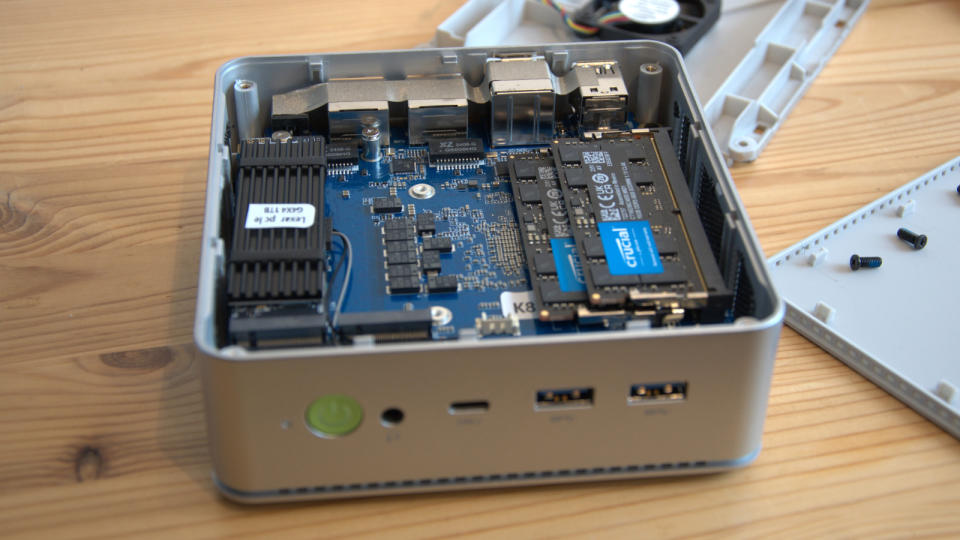
GMKtec NucBox K8: Features
AMD Ryzen 7 8845HS (8 cores, 16 Threads)
20 PCIe Lanes
Radeon 780M GPU
Having tested many NUC systems that used the Ryzen 7000, 6000 and 5000 series, this is the first of the next-generation Ryzen 8000 Series we've encountered.
The AMD Ryzen 7 8845HS sports eight cores and sixteen threads and is configurable from 35W to 54W, depending on the application. Unlike a laptop, which needs to conserve battery power, this process can use the cool running offered by the 4nm FinFet fabrication to make either a largely silent system or one with an impressive performance profile.
Where Intel has now gone with three different core types on the Ultra processors, AMD has stuck with the old model of eight cores, all with hyperthreading.
The innovation isn't in the overall architecture but in what each core can achieve. The 8845HS has enough cache and clock variation to do plenty and has twenty PCIe 4.0 lanes handy to connect external I/O without bandwidth restrictions.
The K8 shows, possibly, that the typical NUC enclosure isn't physically big enough to have the ports that this platform might be able to support. It will be interesting to see what other brands do with it and whether they make marginally larger machines to enable them to better exploit the AMD Ryzen 8000 series.
The K8 still has plenty of I/O for an NUC design, and the dual 2.5GbE LAN ports make it an ideal active firewall or mini file server.
If this platform has a weakness, it is in the Radeon 780M because that's the only part of this package stopping the K8 from being a gaming system. The performance of Intel's integrated ARC GPU hints that AMD needs to offer something better than the 780M at the earliest opportunity since it is only marginally better than the 680M it superseded.
This system's performance is much more than a typical office user might need; it is undoubtedly desktop system level and even makes some supposedly powerful systems look decidedly lead-legged.
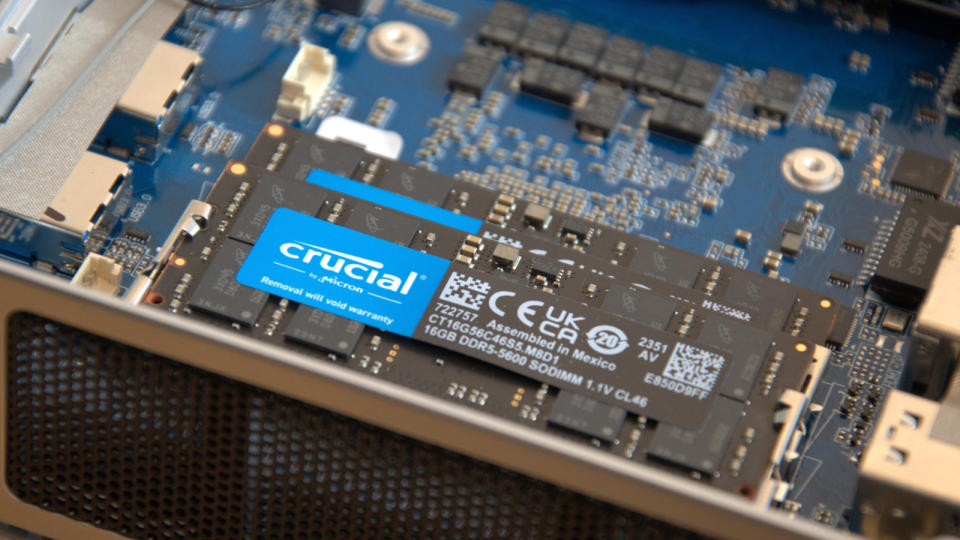
Features: 4 / 5
GMKtec NucBox K8: Performance
Excellent performance
Radeon 780M
Lexar NVMe
Conveniently, having just seen the Acemagic F2A and its Ultra 5 series processor, this machine provided a perfect counterpoint to what the AMD Ryzen 8000 series processor offers compared to the best Intel has.
To its credit, the Intel machine leads two of our benchmarks. It won with WildLife and TimeSpy, demonstrating what the ARC GPU can achieve in the right situations.
However, everything else is a clear win for the Ryzen 7 8845HS, and some differences in single-core processing and OpenCL are significant.
The AMD platform is much more powerful, and for those who need the extra performance, it's the obvious choice.
One thing to note is that the K8 scored much higher on the Crystal Disk tests because GMKtec used an OEM NVMe drive by Lexar, and not a cheap unbranded module that couldn't fully exploit the PCIe 4.0 M.2 slot.
Overall, this is the fastest AMD-powered NUC we've seen, and the only machine that was consistently faster than this was the Minisforum MS-01, which used the Intel i9 13900H.
Performance: 4.5 / 5
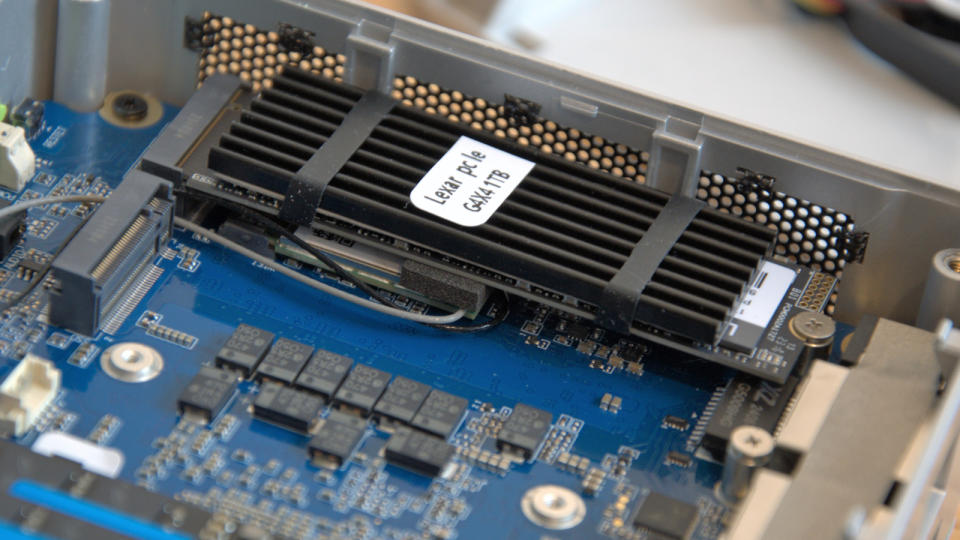
GMKtec NucBox K8: Verdict
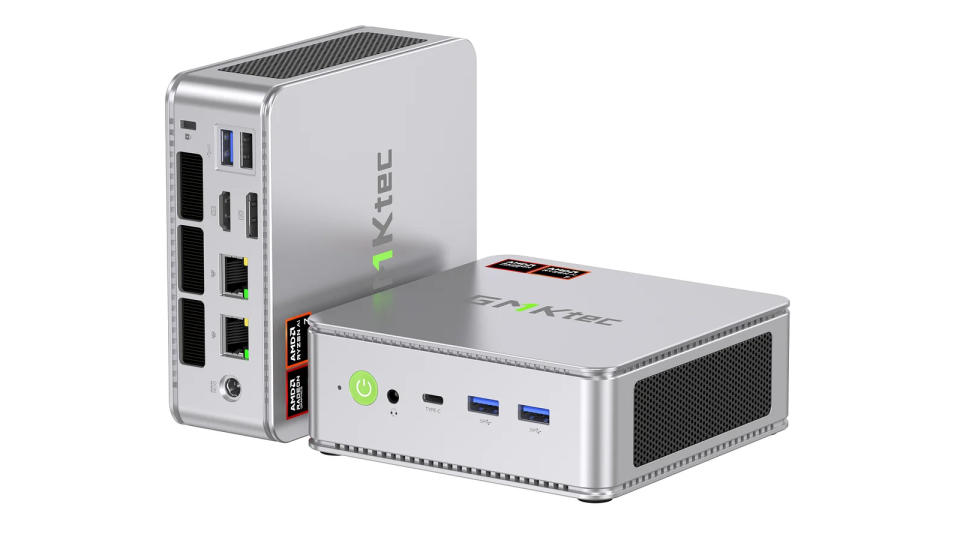
If the silver plastic used in this case were aluminium or looked better, our verdict would be a wholesale endorsement of this hardware. An excellent platform, neatly packaged with most of the features that users want at an affordable price point.
We could ramble on about how annoying it is to get to the inside or that a place should have been found for an extra USB 4.0 port, but this is a premium solution for anyone who likes a small but potent system.

